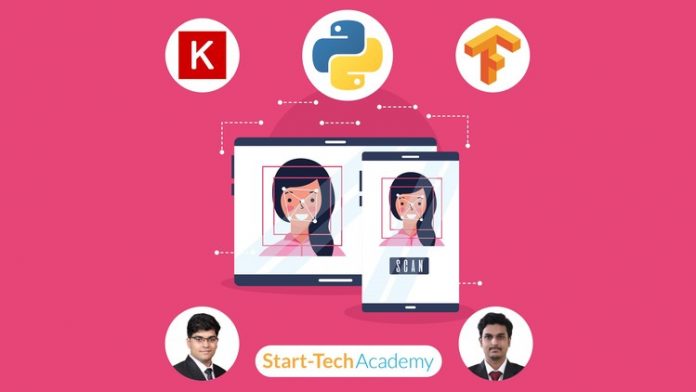You’re looking for a complete Convolutional Neural Network (CNN) course that teaches you everything you need to create a Image Recognition model in Python, right?
You’ve found the right Convolutional Neural Networks course!
After completing this course you will be able to:
- Identify the Image Recognition problems which can be solved using CNN Models.
- Create CNN models in Python using Keras and Tensorflow libraries and analyze their results.
- Confidently practice, discuss and understand Deep Learning concepts
- Have a clear understanding of Advanced Image Recognition models such as LeNet, GoogleNet, VGG16 etc.
How this course will help you?
A Verifiable Certificate of Completion is presented to all students who undertake this Convolutional Neural networks course.
If you are an Analyst or an ML scientist, or a student who wants to learn and apply Deep learning in Real world image recognition problems, this course will give you a solid base for that by teaching you some of the most advanced concepts of Deep Learning and their implementation in Python without getting too Mathematical.
Why should you choose this course?
This course covers all the steps that one should take to create an image recognition model using Convolutional Neural Networks.
Most courses only focus on teaching how to run the analysis but we believe that having a strong theoretical understanding of the concepts enables us to create a good model . And after running the analysis, one should be able to judge how good the model is and interpret the results to actually be able to help the business.
What makes us qualified to teach you?
The course is taught by Abhishek and Pukhraj. As managers in Global Analytics Consulting firm, we have helped businesses solve their business problem using Deep learning techniques and we have used our experience to include the practical aspects of data analysis in this course
We are also the creators of some of the most popular online courses – with over 300,000 enrollments and thousands of 5-star reviews like these ones:
This is very good, i love the fact the all explanation given can be understood by a layman – Joshua
Thank you Author for this wonderful course. You are the best and this course is worth any price. – Daisy
Our Promise
Teaching our students is our job and we are committed to it. If you have any questions about the course content, practice sheet or anything related to any topic, you can always post a question in the course or send us a direct message.
Download Practice files, take Practice test, and complete Assignments
With each lecture, there are class notes attached for you to follow along. You can also take practice test to check your understanding of concepts. There is a final practical assignment for you to practically implement your learning.
What is covered in this course?
This course teaches you all the steps of creating a Neural network based model i.e. a Deep Learning model, to solve business problems.
Below are the course contents of this course on ANN:
- Part 1 (Section 2)- Python basics
This part gets you started with Python.
This part will help you set up the python and Jupyter environment on your system and it’ll teach you how to perform some basic operations in Python. We will understand the importance of different libraries such as Numpy, Pandas & Seaborn.
- Part 2 (Section 3-6) – ANN Theoretical Concepts
This part will give you a solid understanding of concepts involved in Neural Networks.
In this section you will learn about the single cells or Perceptrons and how Perceptrons are stacked to create a network architecture. Once architecture is set, we understand the Gradient descent algorithm to find the minima of a function and learn how this is used to optimize our network model.
- Part 3 (Section 7-11) – Creating ANN model in Python
In this part you will learn how to create ANN models in Python.
We will start this section by creating an ANN model using Sequential API to solve a classification problem. We learn how to define network architecture, configure the model and train the model. Then we evaluate the performance of our trained model and use it to predict on new data. Lastly we learn how to save and restore models.
We also understand the importance of libraries such as Keras and TensorFlow in this part.
- Part 4 (Section 12) – CNN Theoretical Concepts
In this part you will learn about convolutional and pooling layers which are the building blocks of CNN models.
In this section, we will start with the basic theory of convolutional layer, stride, filters and feature maps. We also explain how gray-scale images are different from colored images. Lastly we discuss pooling layer which bring computational efficiency in our model.
- Part 5 (Section 13-14) – Creating CNN model in Python
In this part you will learn how to create CNN models in Python.We will take the same problem of recognizing fashion objects and apply CNN model to it. We will compare the performance of our CNN model with our ANN model and notice that the accuracy increases by 9-10% when we use CNN. However, this is not the end of it. We can further improve accuracy by using certain techniques which we explore in the next part.
- Part 6 (Section 15-18) – End-to-End Image Recognition project in Python
In this section we build a complete image recognition project on colored images.We take a Kaggle image recognition competition and build CNN model to solve it. With a simple model we achieve nearly 70% accuracy on test set. Then we learn concepts like Data Augmentation and Transfer Learning which help us improve accuracy level from 70% to nearly 97% (as good as the winners of that competition).
By the end of this course, your confidence in creating a Convolutional Neural Network model in Python will soar. You’ll have a thorough understanding of how to use CNN to create predictive models and solve image recognition problems.
Go ahead and click the enroll button, and I’ll see you in lesson 1!
Cheers
Start-Tech Academy
————
Below are some popular FAQs of students who want to start their Deep learning journey-
Why use Python for Deep Learning?
Understanding Python is one of the valuable skills needed for a career in Deep Learning.
Though it hasn’t always been, Python is the programming language of choice for data science. Here’s a brief history:
In 2016, it overtook R on Kaggle, the premier platform for data science competitions.
In 2017, it overtook R on KDNuggets’s annual poll of data scientists’ most used tools.
In 2018, 66% of data scientists reported using Python daily, making it the number one tool for analytics professionals.
Deep Learning experts expect this trend to continue with increasing development in the Python ecosystem. And while your journey to learn Python programming may be just beginning, it’s nice to know that employment opportunities are abundant (and growing) as well.
What is the difference between Data Mining, Machine Learning, and Deep Learning?
Put simply, machine learning and data mining use the same algorithms and techniques as data mining, except the kinds of predictions vary. While data mining discovers previously unknown patterns and knowledge, machine learning reproduces known patterns and knowledge—and further automatically applies that information to data, decision-making, and actions.
Deep learning, on the other hand, uses advanced computing power and special types of neural networks and applies them to large amounts of data to learn, understand, and identify complicated patterns. Automatic language translation and medical diagnoses are examples of deep learning.






















![[100% Free]Python Bootcamp 2020 Build 15 working Applications and Games (31.5 Hours)](https://oyoads.in/wp-content/uploads/2020/05/Python-Bootcamp-2020-Build-15-working-Applications-and-Games-1-100x70.jpg)

![[100% Free]Java Programming: Complete Beginner to Advanced](https://oyoads.in/wp-content/uploads/2020/05/IMG_20200519_054150_522-100x70.jpg)
